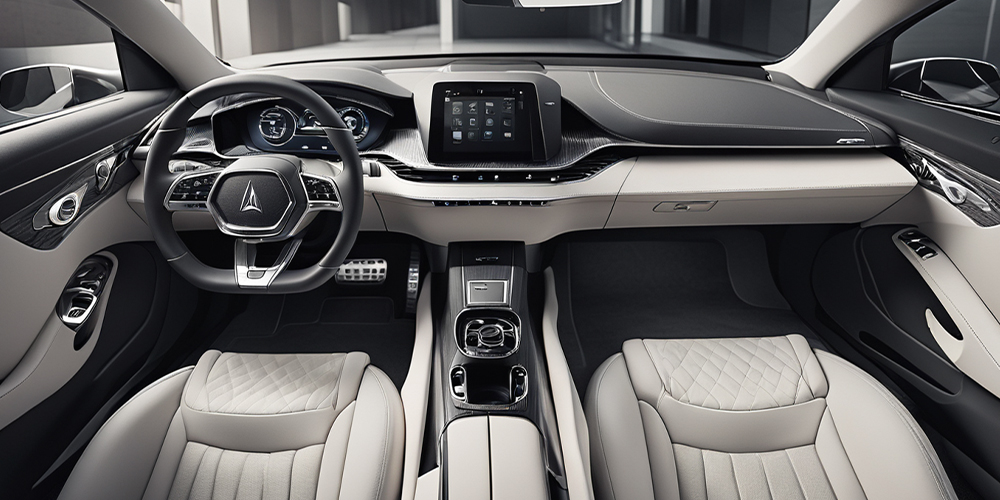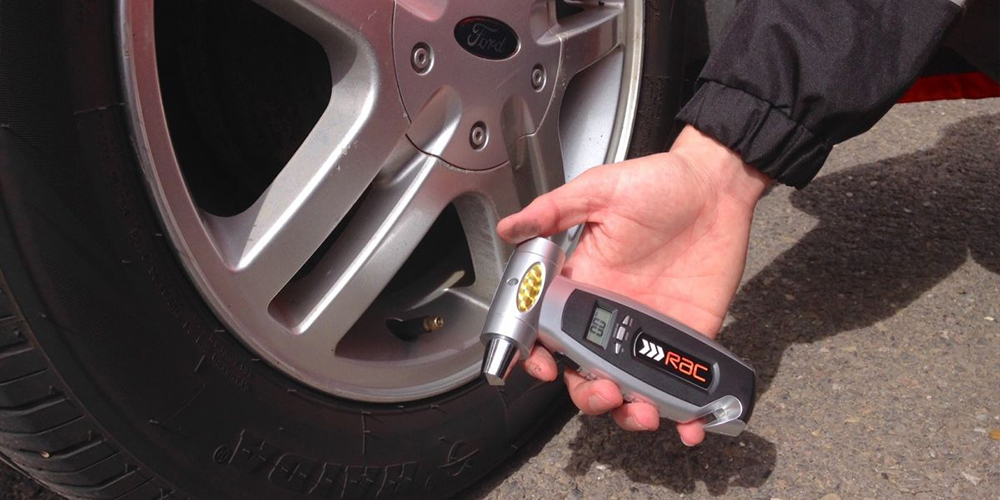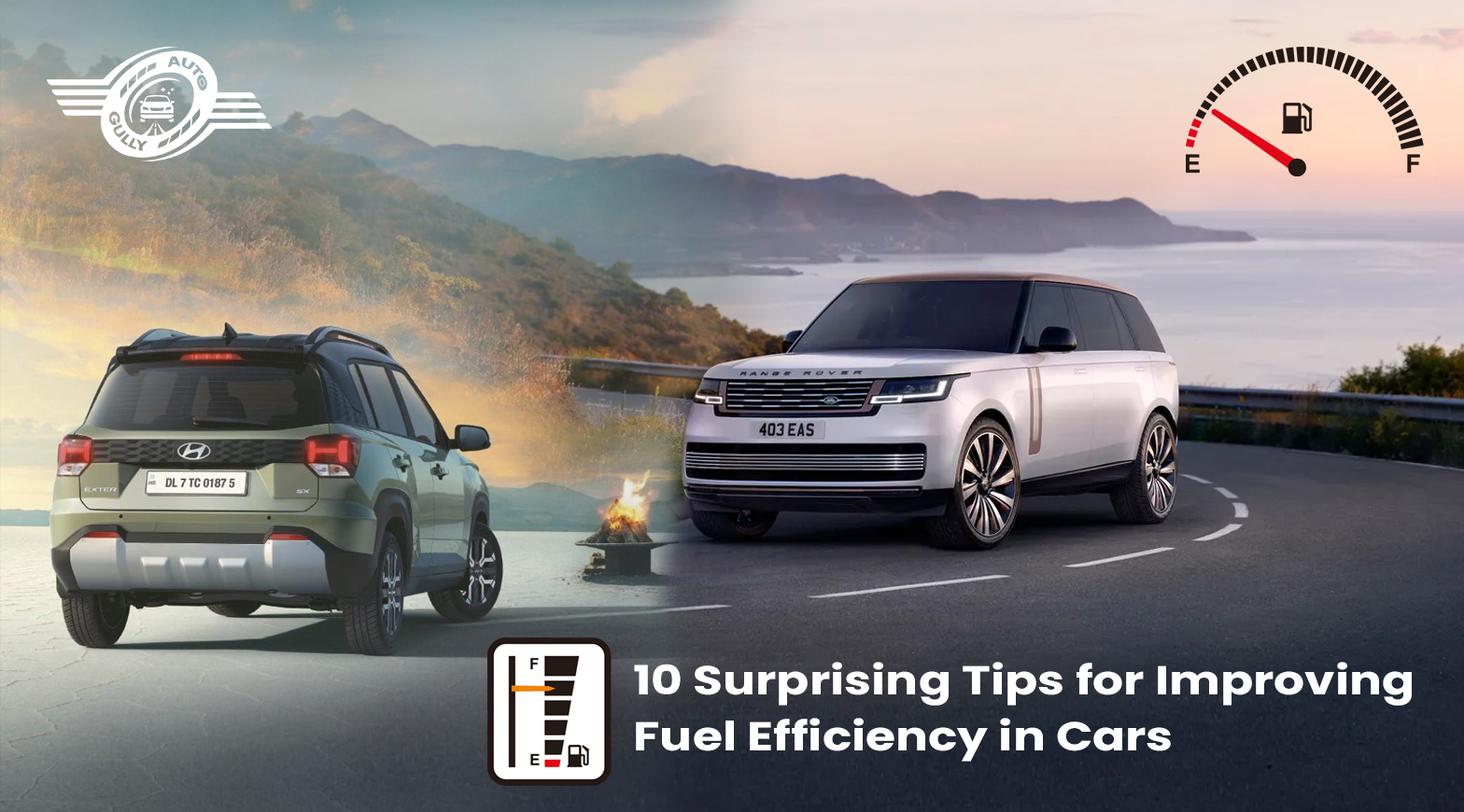Introduction
Fuel efficiency is more than just a buzzword; it’s a vital consideration for both our wallets and the environment. By adopting smarter driving habits and maintaining our vehicles properly, we can significantly reduce fuel costs and minimize our carbon footprint. In this article, we’ll explore 10 surprising tips for improving fuel efficiency in cars. These practical strategies will help you save money at the pump and drive greener without compromising on performance.

1. Clear out the Extra Clutter from Your Car
Carrying excess weight in your vehicle can dramatically affect fuel consumption. The heavier your car, the more fuel it needs to move. By decluttering and removing unnecessary items, you can improve your car’s fuel efficiency.
Start by emptying your trunk and backseat of any items you don’t need for your daily commute. This could include sports equipment, tools, or bags. Additionally, remove any roof racks or bike carriers when they are not in use, as these add weight and create aerodynamic drag, further decreasing fuel efficiency.
Regularly cleaning out your car and being mindful of what you carry can lead to noticeable improvements in fuel consumption.

2. Limit Idling to Conserve Fuel and Reduce Pollution
Idling is a significant yet often overlooked factor in fuel consumption and pollution. When your engine is running but the car isn’t moving, you’re getting zero miles per gallon. Modern engines are designed to use less fuel when restarted than when idling for prolonged periods.
To conserve fuel, turn off your engine if you expect to be parked for more than a minute. This includes waiting at long traffic lights, in drive-thru lines, or when picking someone up. Avoid using car accessories that require the engine to be on, such as air conditioning, when the car is stationary. By reducing idling time, you’ll save fuel and emit fewer pollutants.

3. Maintaining a Steady Speed and Following Speed Limits
Speed fluctuations can significantly impact fuel efficiency. Rapid acceleration and deceleration use more fuel compared to maintaining a consistent speed. Driving at a steady pace helps optimize fuel consumption, particularly on highways.
Using cruise control on long stretches of road can help maintain a constant speed and improve fuel efficiency. When driving in urban areas, try to anticipate traffic flow to avoid unnecessary stopping and starting. Adhering to speed limits not only enhances safety but also keeps your engine running at its most efficient.

4. Regularly Check Your Tire Pressure for Optimal Fuel Consumption
Underinflated tires create more rolling resistance, which means your engine has to work harder to move your car, thus using more fuel. Maintaining the correct tire pressure is essential for both safety and fuel efficiency.
Check your tire pressure at least once a month and before long trips. Refer to your vehicle’s manual or the sticker inside the driver’s door for the recommended tire pressure values. Use a reliable gauge to measure pressure and inflate tires accordingly. Properly inflated tires can improve your car’s fuel economy and extend the life of your tires.

5. Importance of Regular Vehicle Maintenance for Fuel Efficiency
Regular maintenance is crucial for keeping your car running efficiently. Neglected maintenance tasks can lead to increased fuel consumption and reduced performance.
Key maintenance items that impact fuel efficiency include replacing clogged air filters, using the correct grade of motor oil, and ensuring proper wheel alignment through regular tire rotations. Clean air filters allow for better airflow to the engine, while the right motor oil reduces friction. Properly aligned wheels reduce drag, making your car more fuel-efficient.
6. Consideration of Electric Cars for Improved Fuel Efficiency
Electric vehicles (EVs) offer a significant advantage in terms of energy efficiency and fuel cost savings. Unlike traditional gasoline engines, electric motors convert more energy from the battery into movement, resulting in higher efficiency.
When evaluating the switch to an EV, consider factors such as the availability of charging infrastructure, the vehicle’s range, and your typical driving habits. Many EVs now offer ranges that are suitable for daily commutes and long-distance travel. Additionally, government incentives and lower operating costs make electric cars an attractive option for those looking to improve fuel efficiency and reduce emissions.
7. Understanding the Role of Tire Inflation and Its Impact on Fuel Efficiency
Proper tire inflation is crucial for maintaining optimal fuel economy. Tires that are underinflated create more rolling resistance, causing the engine to burn more fuel.
To keep your tires properly inflated, check their pressure regularly and adjust as needed. This should be done when the tires are cold, as heat can increase the pressure reading. Regularly inspecting your tires for wear and tear can also prevent issues that might lead to decreased fuel efficiency. Consistent tire care ensures that your vehicle operates at its best, saving fuel and enhancing safety.

8. Debunking the Myth: Is It More Fuel-Efficient to Drive with the Air Conditioning On or Windows Down?
There’s a long-standing debate about whether it’s more fuel-efficient to drive with the air conditioning (A/C) on or the windows down. Both options affect fuel economy, but the impact varies depending on speed.
At lower speeds, driving with windows down has a negligible effect on fuel consumption. However, at higher speeds, open windows increase aerodynamic drag, making the engine work harder. Conversely, using A/C consumes additional power, but modern systems are relatively efficient.
To optimize fuel efficiency, use A/C sparingly and set it to a moderate temperature. When driving at high speeds, it’s generally more efficient to use the A/C than to open the windows. Utilizing the recirculation mode can also reduce the load on the A/C system.

9. The Art of Smooth Acceleration and Deceleration for Better Fuel Economy
Aggressive driving behaviors, such as rapid acceleration and hard braking, can significantly decrease fuel efficiency. Smooth driving techniques help improve fuel economy and extend the life of your vehicle’s components.
Accelerate gradually and avoid flooring the gas pedal. When approaching a stop, anticipate traffic flow and decelerate smoothly. By maintaining a steady speed and avoiding abrupt movements, you can reduce fuel consumption and create a safer driving environment.
10. Navigating Rush Hour Traffic: Tips to Conserve Fuel in Stop-Start Conditions
Rush hour traffic, with its frequent stops and starts, can be a major drain on fuel. To conserve fuel in these conditions, consider strategies such as planning alternative routes, using traffic apps, and adjusting your schedule to avoid peak times.
If you can’t avoid rush hour, try to maintain a steady pace by leaving more space between your car and the one in front. This allows you to roll slowly rather than constantly stopping and starting. Additionally, carpooling or using public transportation can reduce the number of cars on the road, benefiting everyone’s fuel efficiency.
Conclusion
Improving fuel efficiency is a win-win for both your wallet and the environment. By adopting the 10 surprising tips discussed in this article, you can make a significant difference in your car’s fuel consumption. From reducing unnecessary weight and minimizing idling to regular maintenance and considering an electric vehicle, each step contributes to better fuel economy. Implementing these strategies will not only save you money but also promote a more sustainable and eco-friendly driving experience. Start making these changes today and enjoy the benefits of improved fuel efficiency in your car.

